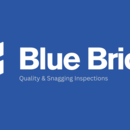What is the purpose of Snagging
Snagging is a quality control process that is typically carried out in construction projects. The purpose of snagging is to identify and rectify any defects or issues in a new building or structure before it is handed over to the client or occupants.
During snagging, a trained professional, often a snagging inspector or consultant, inspects the building or structure to identify any issues such as incomplete or substandard work, damage, or missing components. These issues are then documented in a snagging report, which is provided to the construction team for rectification.
By carrying out snagging, the quality of the building or structure can be improved, and any issues can be addressed before the client or occupants move in, avoiding potential safety hazards and saving costs associated with repairs that may be more difficult to carry out after the building is in use.
[edit] Related articles on Designing Buildings
- Backlog.
- Burn down chart.
- Commissioning.
- De minimis.
- Defects.
- Defects liability period.
- Defects list.
- Defective Premises - Liability and Measure of Damages.
- Defective Premises Act.
- Final certificate.
- Practical completion.
- Punch list.
- Schedule of defects.
- Site inspection.
- Snagging construction works
- Work-to-complete list.
Featured articles and news
Government consultations for the summer of 2025
A year of Labour, past and present consultations on the environment, the built environment, training and tax.
CMA competitiveness probe of major housing developers
100 million affordable housing contributions committed with further consultation published.
Homes England supports Greencore Homes
42 new build affordable sustainable homes in Oxfordshire.
Zero carbon social housing: unlocking brownfield potential
Seven ZEDpod strategies for brownfield housing success.
CIOB report; a blueprint for SDGs and the built environment
Pairing the Sustainable Development Goals with projects.
Types, tests, standards and fires relating to external cladding
Brief descriptions with an extensive list of fires for review.
Latest Build UK Building Safety Regime explainer published
Key elements in one short, now updated document.
UKGBC launch the UK Climate Resilience Roadmap
First guidance of its kind on direct climate impacts for the built environment and how it can adapt.
CLC Health, Safety and Wellbeing Strategy 2025
Launched by the Minister for Industry to look at fatalities on site, improving mental health and other issues.
One of the most impressive Victorian architects. Book review.
Common Assessment Standard now with building safety
New CAS update now includes mandatory building safety questions.
RTPI leader to become new CIOB Chief Executive Officer
Dr Victoria Hills MRTPI, FICE to take over after Caroline Gumble’s departure.
Social and affordable housing, a long term plan for delivery
The “Delivering a Decade of Renewal for Social and Affordable Housing” strategy sets out future path.
A change to adoptive architecture
Effects of global weather warming on architectural detailing, material choice and human interaction.
The proposed publicly owned and backed subsidiary of Homes England, to facilitate new homes.
How big is the problem and what can we do to mitigate the effects?
Overheating guidance and tools for building designers
A number of cool guides to help with the heat.
The UK's Modern Industrial Strategy: A 10 year plan
Previous consultation criticism, current key elements and general support with some persisting reservations.
Building Safety Regulator reforms
New roles, new staff and a new fast track service pave the way for a single construction regulator.

























